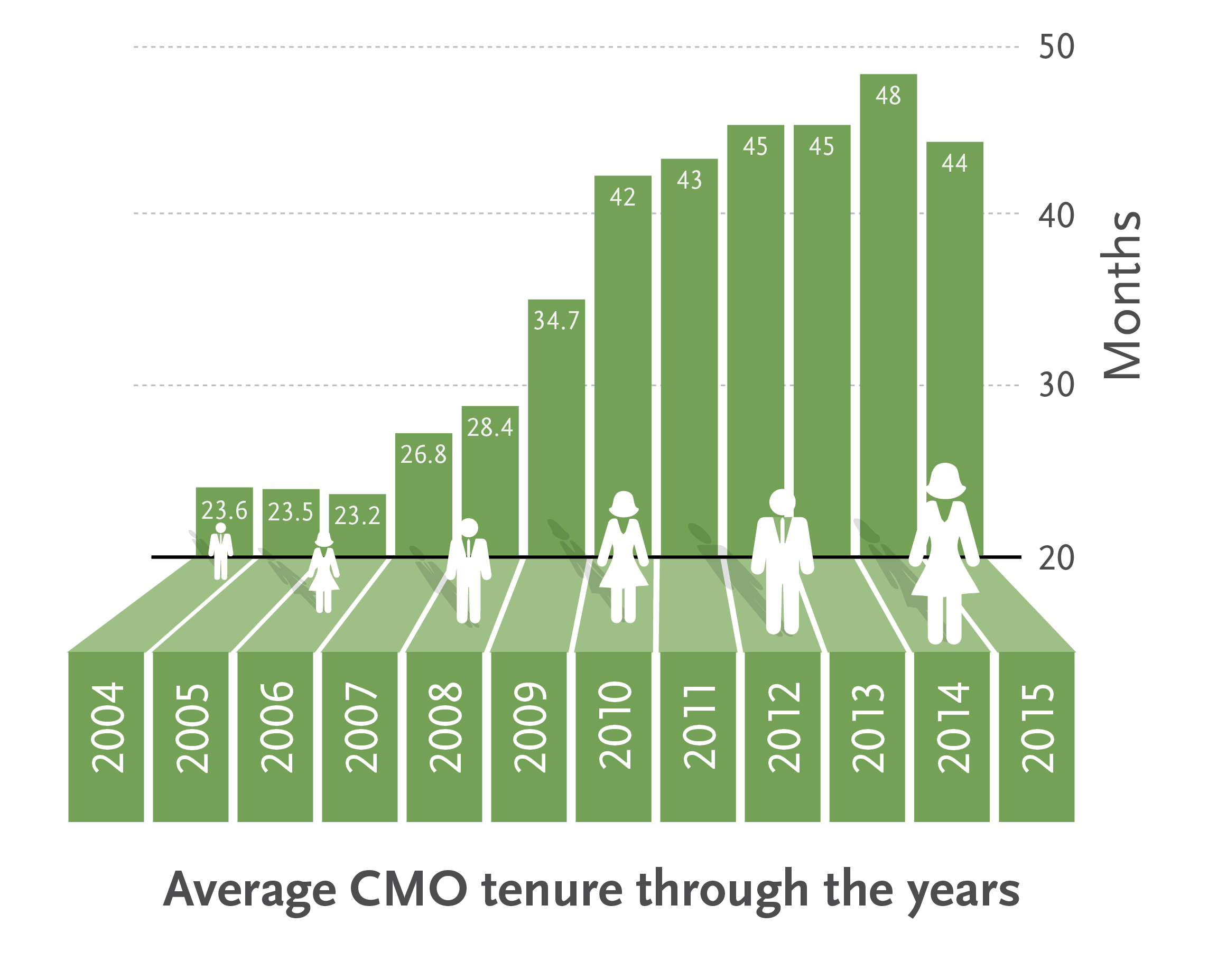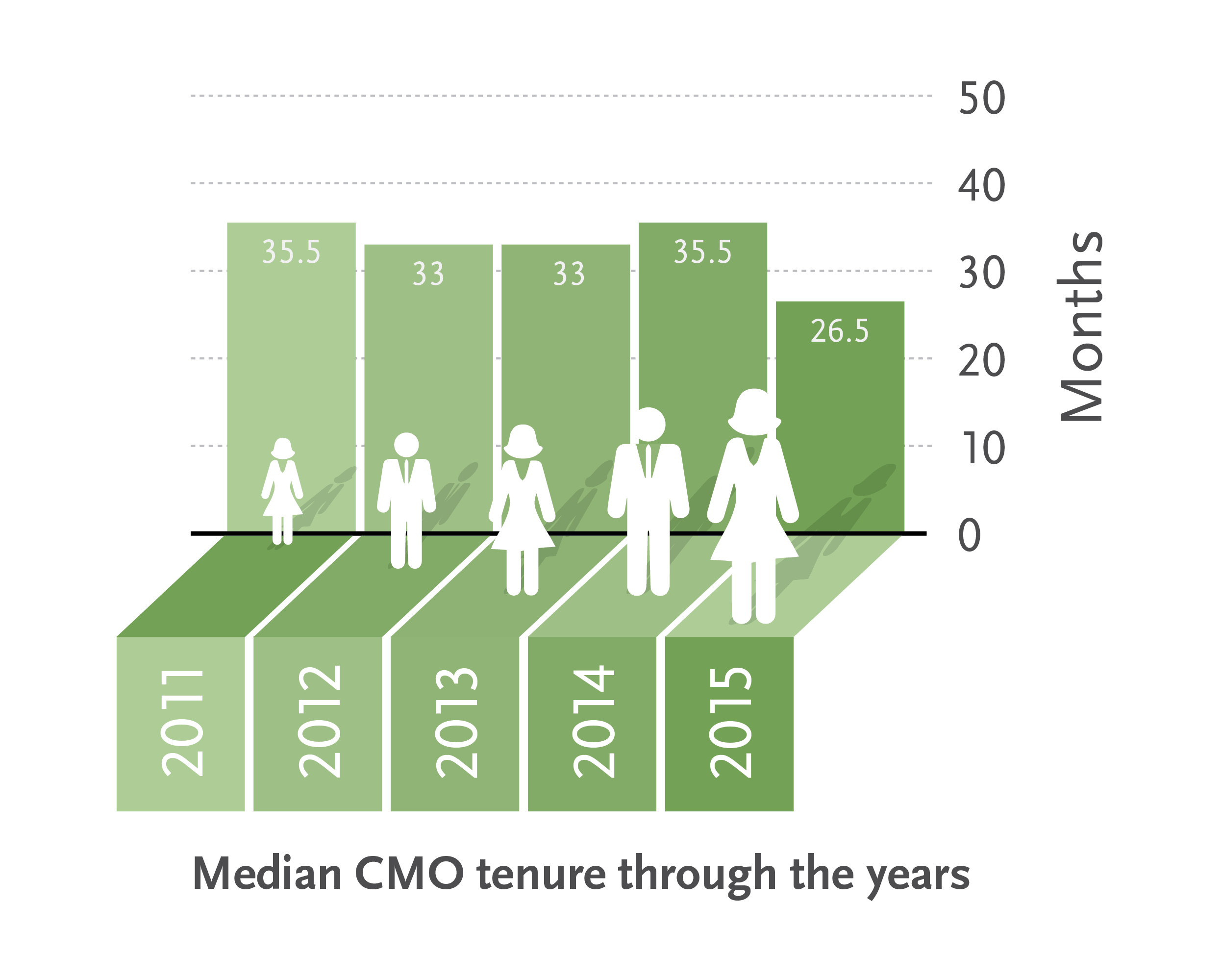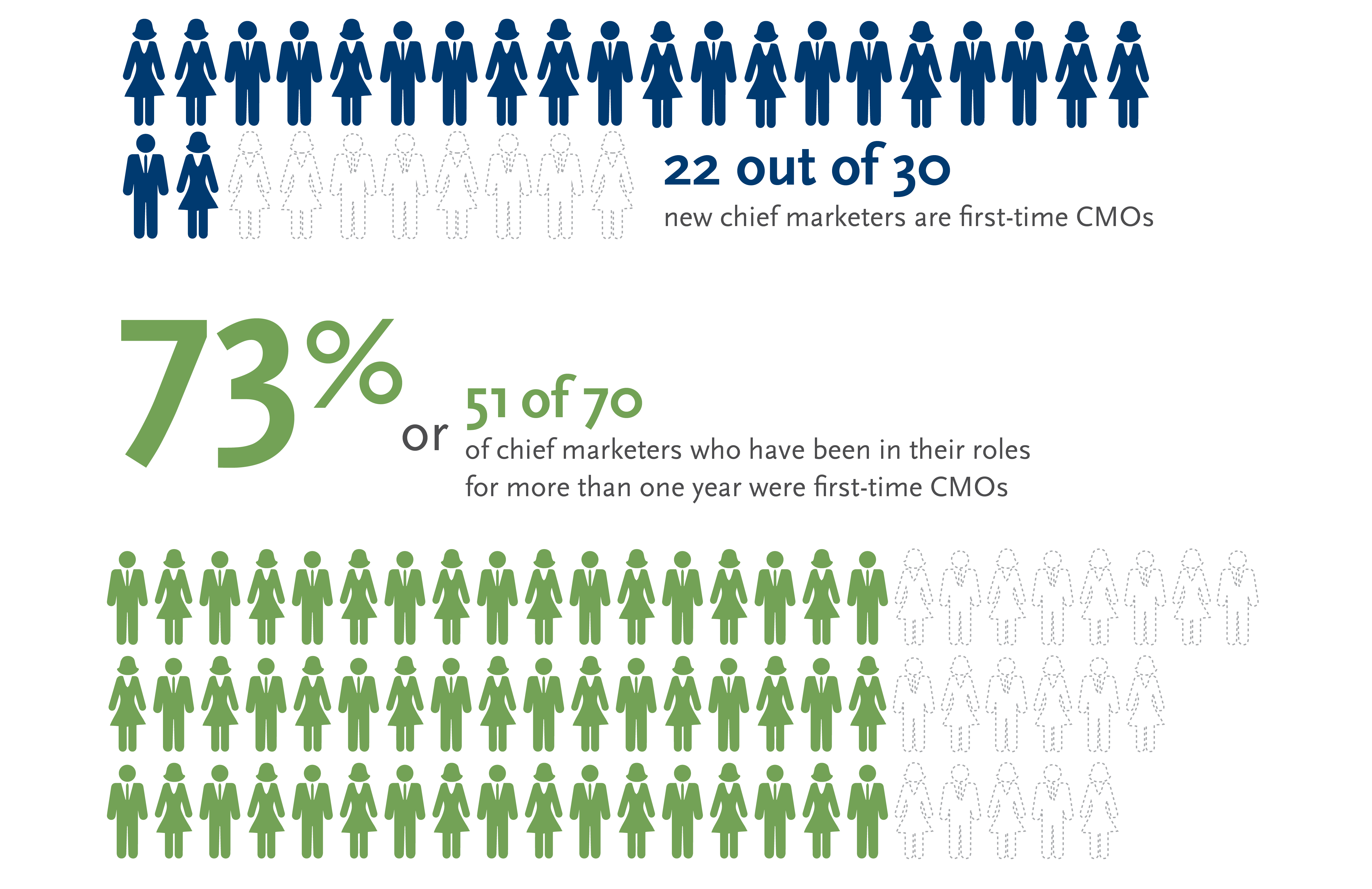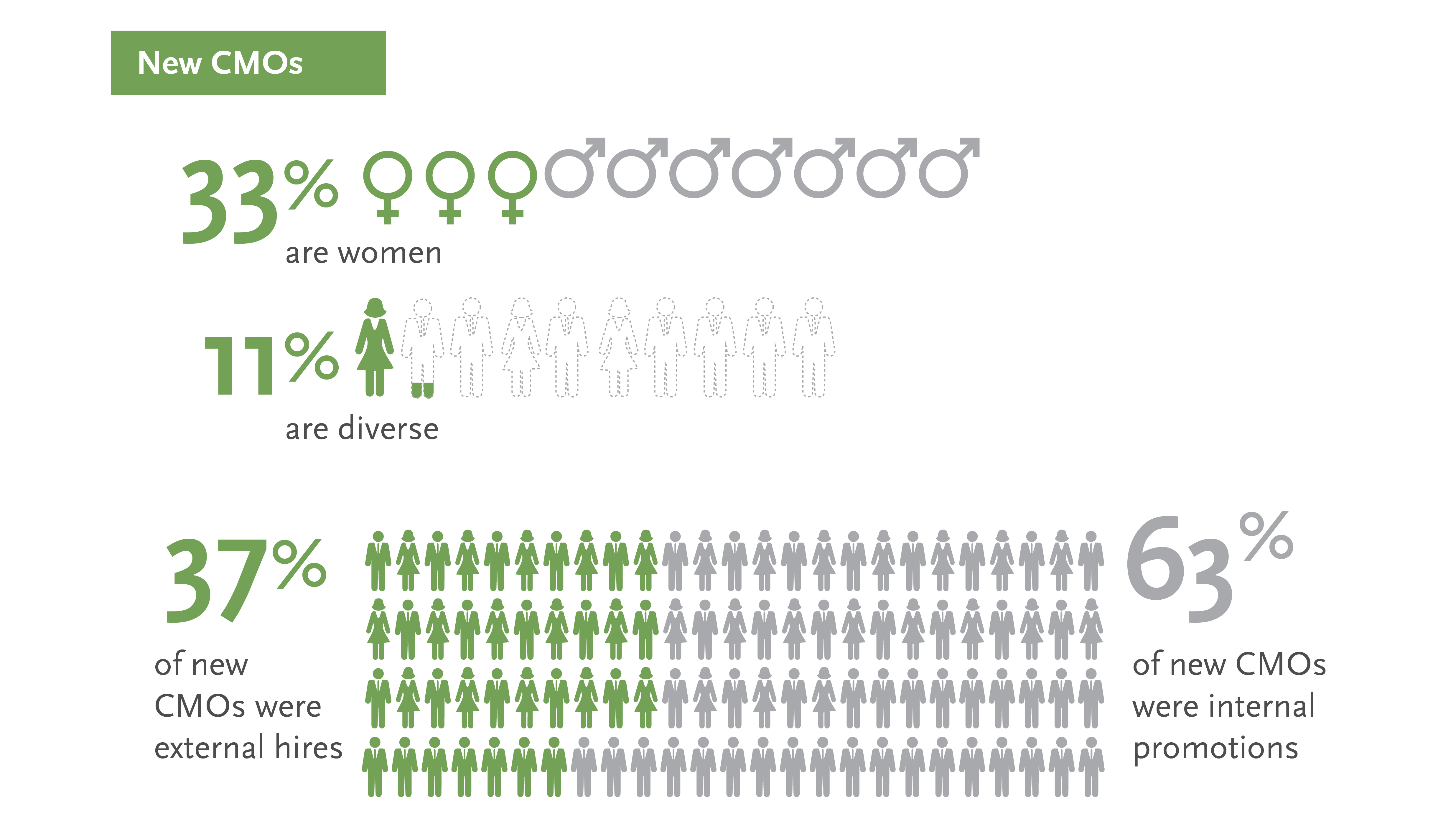Spencer Stuart has analyzed the tenures of chief marketing officers (CMOs) for more than 10 years to gain insights into trends in marketing leadership and the implications for organizations. This year, we analyzed the tenures of chief marketers from 100 of the top U.S. advertised brands as of December 31, 2015, and examined the profiles of new marketing leaders.
Here are our findings:
2015 marked first drop in tenure in a decade
The average tenure for chief marketing officers of leading U.S. consumer brand companies dropped from 48 months to 44 months, representing the first decline of average tenure in 10 years.

Median tenure declines by nine months
This year, we added median tenure to our analysis to provide an additional perspective and one that is less impacted by outliers than average tenure. Similar to the average, median tenure also declined, from 35.5 months in 2014 to 26.5 in 2015.

Nearly one-third are first-time CMOs
The majority of the 30 new CMOs (73%) are moving into the top marketing job for the first time. This percentage is consistent with the remaining companies on the list: 51 of the existing 70 CMOs (73%) were first-time CMOs when they were named to their current roles.
According to Greg Welch, who launched Spencer Stuart’s Marketing Officer Practice and the CMO tenure study, shorter tenures are only part of the story. “It’s easy to focus solely on the fact we’re seeing shorter CMO tenures, which is telling, but I think equally compelling is that 30 companies of the 100 in our study have new senior marketers at the helm,” said Welch. “The industry-wide impact of having nearly one-third of the top CMOs new to their roles is significant, given the incredible influence and buying power that today’s top CMOs wield.”
With the majority of new CMOs joining the C-suite for the first time, companies must put structures and systems in place to help them be successful over the long term. “This isn’t about putting guard rails in place,” added Welch, “but about having a thoughtful, well-executed transition playbook and process, with solid support from the peer group. This is particularly critical for a first-time CMO, whether the CMO is an external hire or an internal promotion. Not surprisingly, much of our energy today is not only in identifying and recruiting great marketing leaders, but then in working closely with them to ensure that they get off to a great start in their new roles.”

Who are these new CMOs?
One-third of the 30 new CMOs are female compared with 20% of the existing CMOs on the list. Diversity among new and existing CMOs is consistent: 11% of new CMOs are diverse compared to 12% of the remaining CMOs. Additionally, 37% of new CMOs were external hires; 63% were internal promotions.

